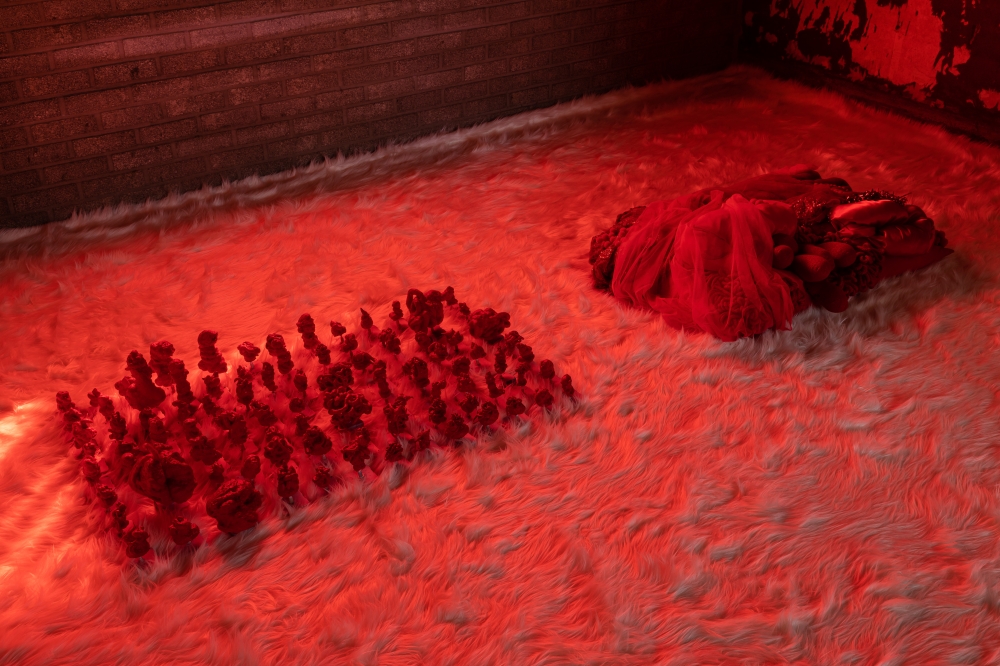요약설명 :
위 작품은 인간의 신체와 욕망을 불교라는 종교에 대입해 표현했다. 신체장기 모양의 방석과 기 계적으로 움직이는 알 수 없는 형태의 108개의 오브제로 이루어진 이번 작품은 불교의 방석과 끊임없이 움직이는 108개의 우리 신체 속 세포를 형상화했다. 작가에게 절의 방석은 개인의 욕망과 간절함으로 가득찬, 신체를 직접 접하고 반복된 행위를 지속하게 하는 혐오스러운 공간이다. 또한 영원히 볼 수 없는 신체 내의 세포들은 종교의 알 수 없는 실체들과 같다. 속세의 번뇌와 욕심을 버리고 평안을 얻고자 찾아가는 불교 사찰에서조차 자신의 욕망을 끊임없이 표출하는 우리 인간의 모습을 보여준다.
김은수 평론 중 발췌
The work represents the human body and desires according to images from the religion of Buddhism. Made using cushions arranged to resemble human organs and 108 unidentifiable objects moving mechanically, it embodies the cushion mats seen in Buddhist temples and 108 cells constantly working in our bodies. To the artist, the cushion mat in a temple is an abominable space that forces repetitive physical activities filled with personal desires and eagerness. Meanwhile, the cells in our bodies, which we can never see, are like religious entities that we are unable to understand. It shows human beings who keep on expressing their desires even in Buddhist temples, where they visit to abandon the agonies and greed of the world and get peace of mind.
Excerpt from Kim Eun Soo’s review
 상체와 무픔의 굴곡 Upper bpdy and knee flexion 커튼, 방석, 시계, 혼합재료 | 가변설치 | 2020
상체와 무픔의 굴곡 Upper bpdy and knee flexion 커튼, 방석, 시계, 혼합재료 | 가변설치 | 2020